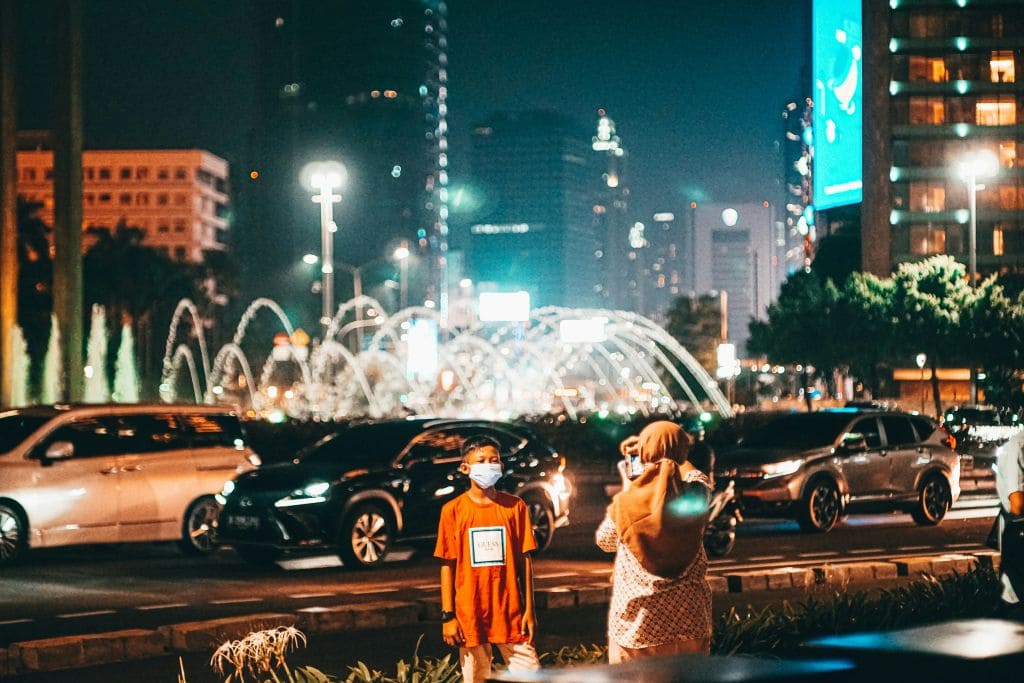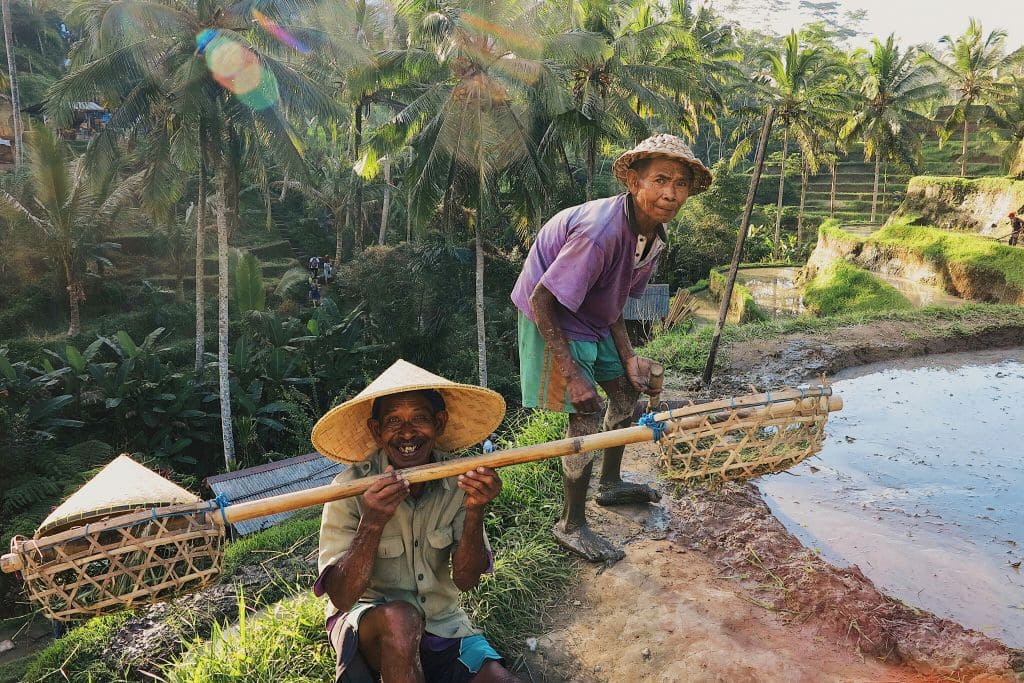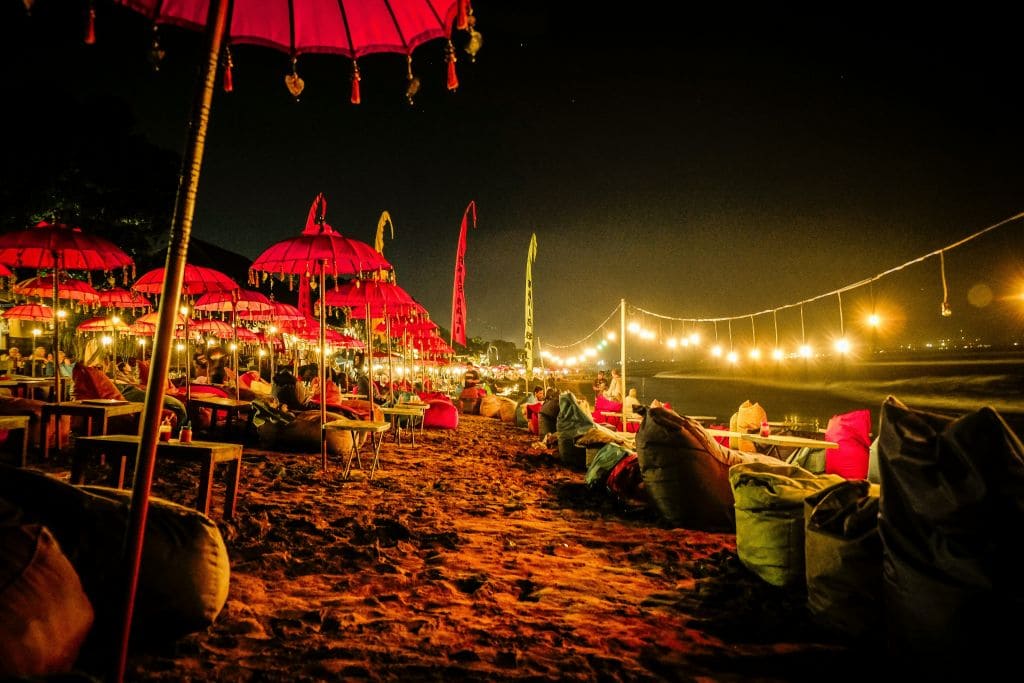Bali Beyond Beaches: Cultural Experiences
Ubud Art Market: A Treasure Trove of Balinese Craftsmanship
Step away from the sun-soaked shores and venture into the heart of Bali, where the artistic spirit thrives in the vibrant town of Ubud. Far removed from the beach parties and bustling tourist hubs, Ubud offers a sanctuary for those seeking cultural immersion and a deeper connection with Bali's rich heritage.
One of the most enchanting experiences awaiting you in Ubud is a visit to its renowned Art Market. A kaleidoscope of colors, textures, and scents, the Ubud Art Market is a bustling labyrinth of stalls overflowing with handcrafted treasures.
It's a place where the soul of Balinese artistry comes alive, and where you can find souvenirs that are not just trinkets, but pieces of art carrying stories and traditions.
As you wander through the narrow aisles, you'll be greeted by an array of exquisite crafts that showcase the incredible talent and creativity of local artisans. Intricately carved wooden sculptures depict mythical creatures and everyday scenes, while vibrant textiles, known as “songket,” shimmer with gold and silver threads.
Delicate ceramics, hand-painted with traditional motifs, adorn shelves alongside silver jewelry, each piece reflecting the island's unique cultural identity.
The market isn't just a place to shop; it's an opportunity to connect with the artisans themselves. Strike up a conversation with a woodcarver as they meticulously shape a piece of wood into a masterpiece, or watch a silversmith transform raw materials into delicate earrings.
These interactions provide a glimpse into the dedication and passion that goes into each creation, making your purchases even more meaningful.
For the budget-conscious traveler, the Ubud Art Market is a haven. Haggling is not only expected but encouraged, and with a bit of friendly negotiation, you can often score amazing deals.
It's a good idea to have a price in mind before you start bargaining, and don't be afraid to walk away if the price isn't right. Remember, there are countless stalls to explore, each offering its own unique treasures.

Beyond the souvenirs and handicrafts, the market itself is an experience not to be missed. The vibrant atmosphere, filled with the chatter of locals and tourists alike, is infectious.
The tantalizing aroma of street food wafts through the air, tempting you with local delicacies like nasi campur (mixed rice) and satay skewers. Take a break from shopping to savor these flavors and immerse yourself in the everyday life of Ubud.
The Dance of the Gods: Witnessing Balinese Traditional Performances
While the Ubud Art Market captivates with its tangible artistry, the cultural heartbeat of Bali truly resonates in its mesmerizing traditional dance performances. As the sun begins its descent, Ubud's temples and performance spaces come alive with the graceful movements and rhythmic sounds of Balinese dancers.
These aren't mere spectacles; they are sacred rituals, stories told through intricate choreography and vibrant costumes, often depicting tales from Hindu epics and ancient folklore.
Among the most enchanting dances is the Legong, a captivating performance featuring graceful dancers adorned in elaborate gold-leafed costumes. Their fluid movements, accompanied by the hypnotic sounds of the gamelan orchestra, create an ethereal atmosphere that transports you to another world.
The Barong dance, a dramatic battle between good and evil, is another highlight, with its elaborate masks and powerful symbolism. And then there's the Kecak, a mesmerizing fire dance performed by a chorus of men chanting in unison, creating a symphony of sound that reverberates through the night.
Witnessing a Balinese dance performance is an immersive cultural experience that transcends language and borders. It's a window into the island's spiritual traditions and a testament to the enduring power of storytelling through movement and music.
Ubud offers numerous venues for witnessing these performances, from intimate temple settings to larger theaters. Whether you choose a traditional setting or a more modern stage, the magic of Balinese dance will leave an indelible mark on your soul.
Tegallalang Rice Terraces: A Symphony of Green
Beyond Ubud's artistic heart lies a landscape that whispers of ancient traditions and the symbiotic relationship between humans and nature. The Tegallalang Rice Terraces, a UNESCO World Heritage Site, offer a breathtaking panorama of emerald green rice paddies cascading down the slopes like giant steps.
As the sun bathes the terraces in golden light, the scene transforms into a living canvas, with farmers tending to their crops and water buffaloes leisurely grazing amidst the lush greenery.
The Tegallalang Rice Terraces are not merely a picturesque backdrop; they are a testament to the ingenuity of the Balinese people and their harmonious coexistence with the land. The intricate Subak irrigation system, a marvel of engineering dating back centuries, ensures that water is equitably distributed to each rice paddy, sustaining the island's agricultural bounty.
To truly appreciate the splendor of the rice terraces, take a leisurely walk along the pathways that wind through the fields. The gentle sound of flowing water, the rustling of palm leaves, and the calls of exotic birds create a symphony of nature that soothes the soul.
Numerous cafes and restaurants perched on the hillside offer stunning views, allowing you to savor local cuisine while taking in the panoramic vistas. Whether you're an avid photographer seeking the perfect shot or simply a traveler yearning for tranquility, the Tegallalang Rice Terraces are a must-visit destination that will leave you in awe of Bali's natural beauty.
Beyond the Main Attractions: Hidden Gems of Ubud's Cultural Scene
While the Ubud Art Market, traditional dance performances, and Tegallalang Rice Terraces are undoubtedly must-see attractions, Ubud's cultural riches extend far beyond these iconic landmarks. For those seeking a deeper dive into Bali's artistic heritage, there are numerous hidden gems waiting to be discovered.
Art enthusiasts will find a haven in Ubud's lesser-known galleries and museums. The Blanco Renaissance Museum, housed in the former home of the renowned artist Antonio Blanco, showcases a captivating collection of his vibrant paintings and sculptures.
The Neka Art Museum, meanwhile, boasts an extensive collection of Balinese art, ranging from traditional works to contemporary masterpieces.
Nature lovers and spiritual seekers will find solace in the Ubud Monkey Forest, a sacred sanctuary where hundreds of long-tailed macaques roam freely amidst ancient banyan trees and moss-covered statues. It's a place of tranquility and natural beauty, where you can observe the monkeys' playful antics or simply wander through the lush greenery and soak up the peaceful atmosphere.
Ubud's countryside is dotted with hidden temples and shrines, each with its own unique charm and history. The Gunung Lebah Temple, nestled amidst a valley of lush rice paddies, offers a serene escape from the hustle and bustle of town. The Goa Gajah (Elephant Cave), a 9th-century Hindu-Buddhist temple, is another intriguing site, with its intricate carvings and mysterious atmosphere.
Whether you're exploring hidden art galleries, wandering through sacred forests, or discovering ancient temples, Ubud's cultural scene offers endless opportunities for exploration and discovery. By venturing beyond the well-trodden paths, you'll uncover the true essence of Bali's artistic soul and connect with the island's rich heritage in a more meaningful way.

Ubud – Bali's Cultural Heartbeat
Ubud stands as a testament to Bali's enduring artistic spirit and harmonious relationship with nature. From the vibrant Ubud Art Market, where every corner reveals a new handcrafted wonder, to the mesmerizing traditional dances that transport you to another realm, Ubud offers a cultural immersion like no other.
The emerald green rice terraces of Tegallalang, with their intricate irrigation systems, whisper tales of ancient traditions and sustainable living. And for those who venture beyond the main attractions, a world of hidden gems awaits, from lesser-known art galleries and museums to serene temples and sacred forests.
Ubud invites you to slow down, to savor the beauty of its surroundings, and to connect with the heart and soul of Balinese culture. By supporting local artisans, respecting the environment, and embracing sustainable tourism practices, you can help preserve this cultural haven for generations to come.
So, as you plan your Bali adventure, remember that there's more to this enchanting island than its stunning beaches. Venture into the heart of Ubud, and let its artistic soul and natural wonders leave an everlasting impression on your heart.
Your Guide to Ubud's Cultural Delights
- What is the best time to visit Ubud's Art Market? The Ubud Art Market is open daily from around 8:00 AM to 6:00 PM, but some stalls may open earlier or stay open later. For a more relaxed shopping experience and cooler temperatures, it's best to visit in the morning or late afternoon.
- How do I get to Ubud from other parts of Bali? Ubud is easily accessible by taxi, private car, or motorbike. Many hotels and tour operators also offer shuttle services. If you're adventurous, you can rent a scooter and explore the scenic countryside at your own pace.
- What are the cultural etiquette tips for visiting Ubud? Balinese people are known for their warmth and hospitality, but it's important to respect their cultural customs. Dress modestly when visiting temples, always ask permission before taking photos of people, and remember to bargain politely at the market.
- What are some other cultural attractions near Ubud? Besides the ones mentioned in this article, you can explore the Puri Saren Agung (Ubud Palace), the Goa Gajah (Elephant Cave), the Campuhan Ridge Walk, and numerous other art galleries and museums.
- Where can I find the best Balinese food in Ubud? Ubud has a wide array of dining options, from traditional warungs (small, family-owned eateries) to upscale restaurants. Some popular spots for authentic Balinese cuisine include Warung Ibu Oka, Warung Babi Guling Ibu Oka 3, and Bebek Bengil (Dirty Duck Diner).
- Is Ubud suitable for families with children? Absolutely! Ubud offers many family-friendly activities, such as visiting the Monkey Forest, exploring the rice terraces, and attending cultural performances. There are also several kid-friendly accommodations and restaurants in the area.
- What are some eco-friendly practices I can adopt while visiting Ubud? Choose accommodations and tour operators that prioritize sustainability, carry a reusable water bottle to reduce plastic waste, and support local businesses that use eco-friendly practices.
- How can I learn more about Balinese art and culture? Consider taking a traditional dance class, visiting local art studios, or attending cultural workshops. Many organizations in Ubud offer immersive experiences that allow you to learn about Balinese traditions firsthand.
- What is the currency used in Ubud? The Indonesian Rupiah (IDR) is the official currency in Bali. You can exchange currency at banks, authorized money changers, or withdraw from ATMs.
What is the best way to get around Ubud? Walking is the best way to explore the town center, while renting a bicycle or scooter is ideal for venturing further afield. Taxis and ride-hailing services are also readily available.

